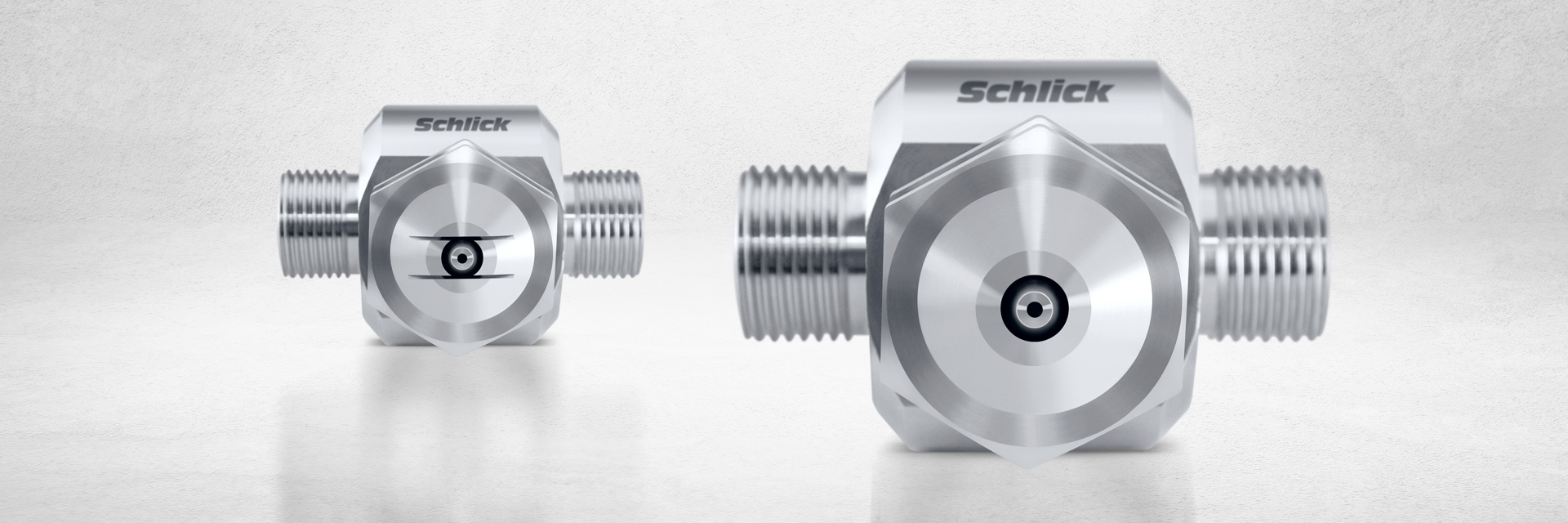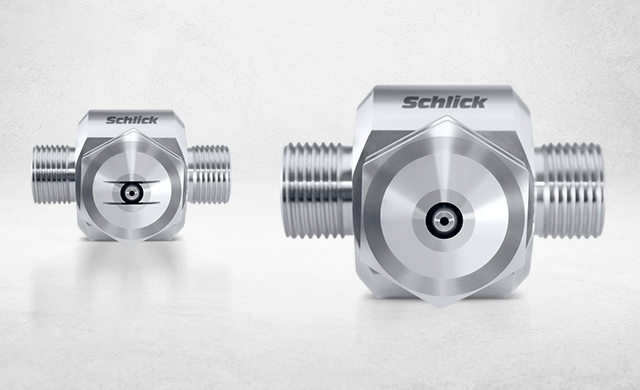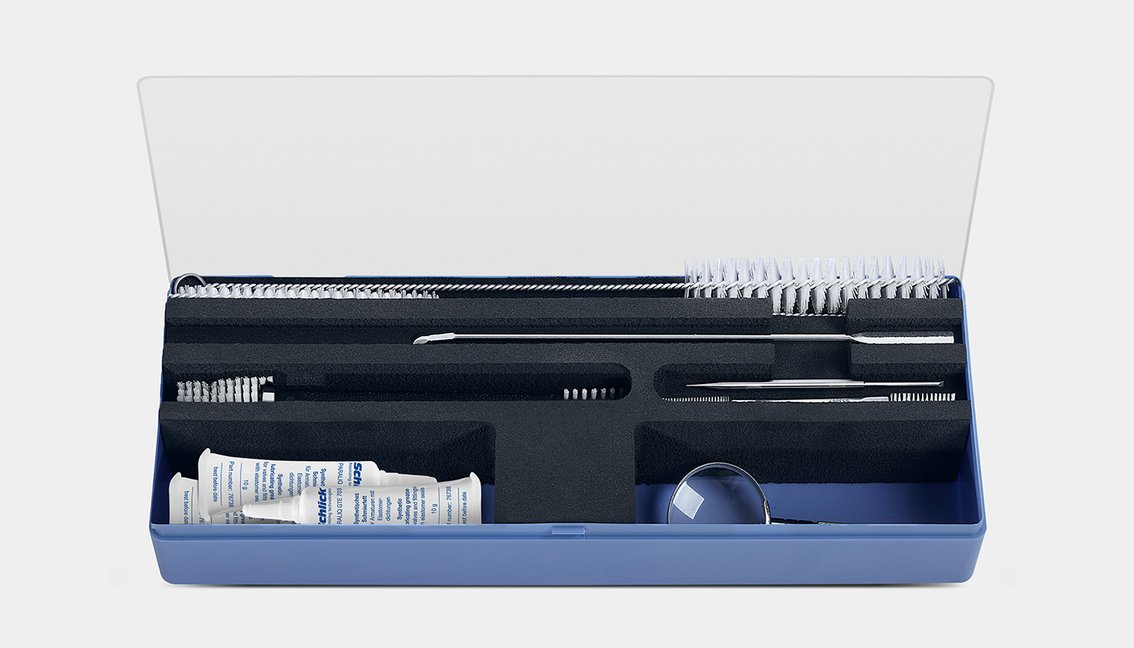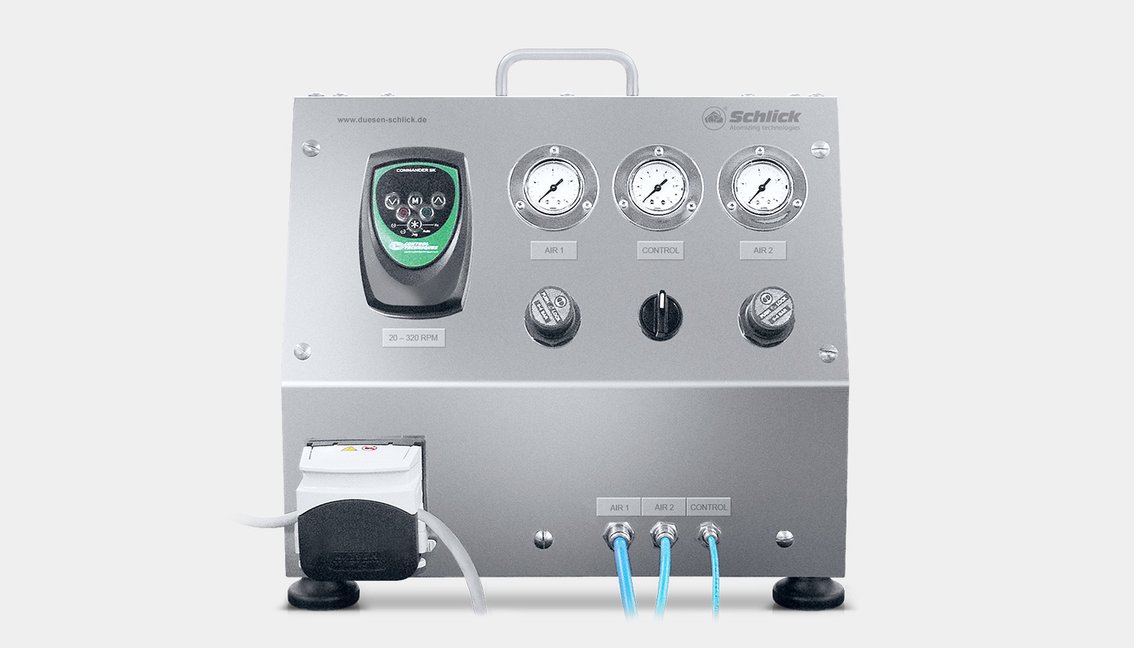




The SCHLICK cleaning set includes all necessary tools for preservation of nozzle parts
3 x brush (ø 8, 14 and 20 mm)
1 x double cylindric-brush
1 x o-ring-tool (stainless steel)
1 x spoon-spatula (stainless steel)
1 x thread-cleaningbrush
1 x magnifying glass
3 x synthetic lubricating grease

Synthetic lubricating grease
for valves and fittings with elastomer seals, compatible with EPDM and conforming to FDA. Can be dispensed in very small doses using special injection devices.

Portable control unit for two substance nozzles for easiest installations.
– 2 pressure adjusted air flows
– 1 control-air flow
– integrated pressure gauge
– adjustable peristalitc pump for liquid flow (Watson Marlow)
– Body: all Stainless Steel
Especially developed for a very wide range of applications in laboratory or smallest production systems. Also designed for operations outside of the system, for example for testing and optimizing processes.